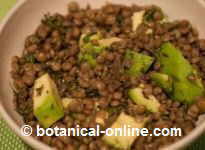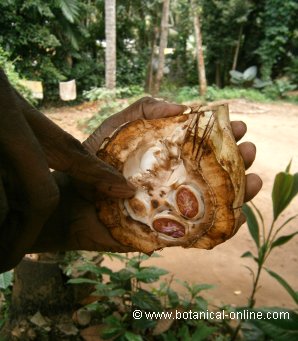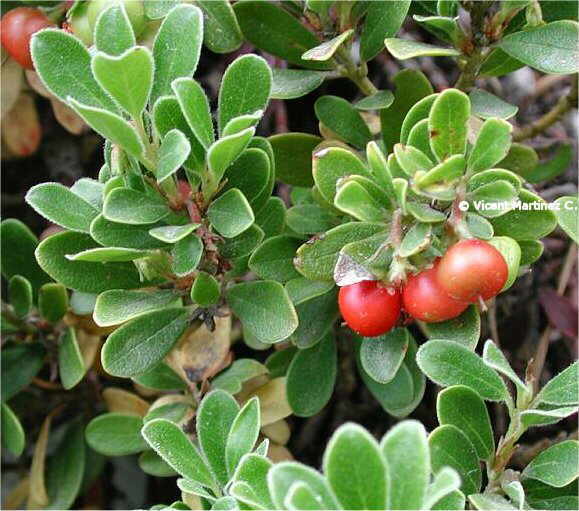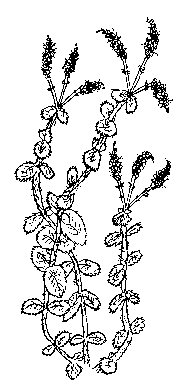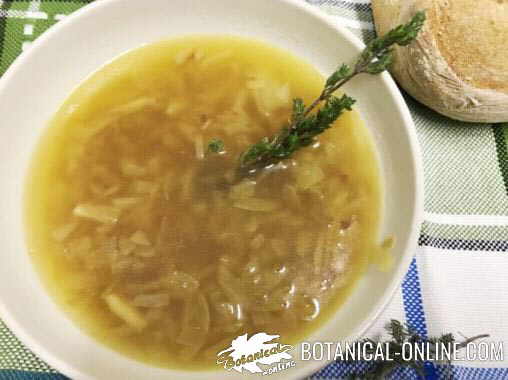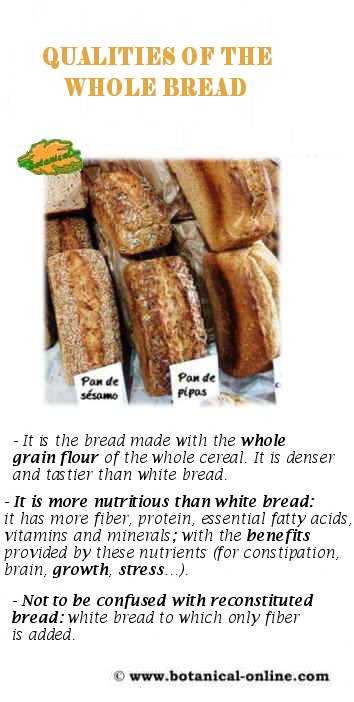Contents
Health benefits of acai pulp
What is Acai Pulp?
Acai pulp is the mesocarp (pulp) of the fleshy fruit of acai palm tree (Euterpe oleracea).
The Latin name of this species of palm tells us some of the nutritional properties of fruit, as “oleracea” refers to the high fat content of the fruit.
The acai fruit is a drupe, a type of fleshy fruit with a seed inside, like grapes. Acai palm fruits are dark purple and covered with a grayish skin color.
Its flavor is unique, a mixture of flavors from berries with dark chocolate. The fruit pulp is extracted by pressure to separate the seed and the epicarp. This fruit is very perishable, so it is generally sold frozen,although it can be found in powder and capsules.
Nutritional value of acai
- Minerals: it is remarkable the amount of calcium and iron in the pulp of acai. It is a food that provides calcium to the bones, helping to improve bone health. Its calcium content is almost in the same proportion than in cow’s milk (120g / 100g of milk).
It also provides phosphorus, an important source of energy, since it is a precursor of a molecule called ATP (adenosine triphosphate). Iron uptake is also very interesting because the pulp of acai is one of the few plant products rich in iron.
- Phytochemicals: the characteristic purple acai pulp is not only attractive and pleasant to make our desserts but also a source of nutrients. The purple color is due to pigments present in some fruits, like in blueberries or aronia. When the body absorbs them, they become powerful antioxidants. These pigments are called anthocyanins. Other components with the same function are present in tannins and polyphenols of this the fruit.
Because of its composition, acai pulp is a high-energy food, rich in fat and complete proteins, with a contribution of nutrients to enhance the nervous system and to remineralize the body. Therefore, this food is suitable for youth and adults, athletes, students, or to restore decayed or convalescent people.
* More information: Acai’s antioxidant properties
Acai pulp composition
- Carbohydrates: acai pulp contains 36.6 g of carbohydrates per 100g of food. Among the sugars, it mainly contains glucose and a type of carbohydrate that can not digest, although it functions as fiber. It is called insoluble fiber and has laxative properties.
- Protein: It contains little protein, although of good quality and in greater proportion than other fruits usually present. Therefore, the acai is an interesting protein supplement for athletes and decayed or convalescing people.
- Fat: Fats in acai pulp are the most prominent and responsible component for its high caloric values. The pulp of this fruit gives us lot of fat, comparable and even superior to that one that of avocado, for example (15g fat / 100g). Among all its fats, we have to distinguish its contribution with oleic acid (omega 9).
- Vitamins: all carbohydrate rich foods such as fruits or cereals are foods containing B vitamins naturally. In effect, they contain vitamin B1, B2 and B3 because these vitamins help better absorb sugars, which in turn nourish the nervous system.
Therefore, the acai pulp naturally contains vitamins that contribute to the nutrition of the brain, providing instant energy and helping for a good mood.
ACAI COMPOSITION
| Acai pulp nutrition factsper 100g | |
| Nutrient | Content |
| Water (g) | 45,9 |
| Calories (Kcal) | 247 |
| Carbohydrates | 36,6 |
| Proteins (g) | 3,8 |
| Fats (g) | 12,2 |
| Vitamin B1 (mg) | 0,36 |
| Vitamin B2 (mg) | 0,01 |
| Vitamin B3 (mg) | 0,40 |
| Vitamin C (mg) | 9 |
| Phosphorus (mg) | 58 |
| Calcium (mg) | 118 |
| Iron (mg) | 11,8 |
Who should take Acai pulp?
Acai pulp is recommended:
- For all the general population: Acai can be taken at breakfast, at lunch as a dessert or as a snack, being an excellent complement and enriching our diet with vitamins, minerals. Acai pulp is and energy supply of good quality. In addition, fat Omega 9 is energetic, has a cardioprotective function and helps balance the fat from our diet.
- Sportsmen: Acai pulp is rich in minerals, that sportsmen lose abundantly through sweating during exercise. Taking acai after intense exercise is a way to replace the electrolytes (minerals) lost during exercise. It also contains sugar, fat and, in lesser proportion, good quality proteins. Acai pulp provides energy for these cases. There is a preparation, called “Açaí na tigela” (Acai bowl in Portuguese), which is consumed by athletes before exercise.
- People with cardiovascular disease: the pulp of acai can be an ideal supplement for people with hypertension, atherosclerosis or cholesterol. It contains a lot of calories and should be eaten in moderate portions. People with diabetes should moderate its consumption due to the simple sugar content.
- People with overweight and obesity: acai pulp is a highly satiating foot because of its fat, sugars and fiber. It is ideal for breakfast and as a snack between meals, being very interesting not to crave for food, and with added cardio benefits.
- People with osteoporosis: Acai fruit is one of the foods with most content in calcium, almost matching the content of the milk. Therefore, people with osteoporosis may benefit from the contribution of calcium in their diet it provides.
*More information in “Acai Recipes” section.
Acai pulp in food
Due to the great importance of this palm in the Amazon jungle, with the pulp of fruit many traditional sweets are produced:
- Açaí na tigela: In some regions of Brazil is consumed Açaí na tigela (“acai in the bowl”), a kind of sorbet. It consists of the crushed pulp of acai frozen, typically decorated with banana, oatmeal or other tropical fruits. It is served at breakfast, dessert or snack. It is considered a tonic preparation, very energizing and highly valued by athletes.
In northern Brazil, with the same name is called a savory dish, consisting of acai mixed with tapioca flour and fish.
- Geleia Açaí: jam made from the pulp of acai.
- Gelado guarana com acai: it is a stimulating and energizing snack also highly valued by athletes, made with guarana syrup and pulp of acai.
- Acai shakes: they are made from the pulp of acai, banana, milk and sugar.
- Açaí em pó: freeze dried acai pulp sold in convenient packages of 125 or 200g. It can be added to jams and desserts enriching and increasing their nutritional value. In addition, due to the expiration of the pulp of acai, it must be frozen or freeze-dried for preservation, which is an advantage to be used throughout the year.
- Acai capsules: They consist of powder supplements of acai pulp. Supplements are marketed as antioxidants and revitalizing due to anthocyanins content and because of the good quality fats they contain.
- Acai food additive: the anthocyanins from the fruit of acai have a high potential to be used by the industry as natural red colorants.
Other food products made with Acai
– Acai Oil
![]() More recipes and information about acai.
More recipes and information about acai.


